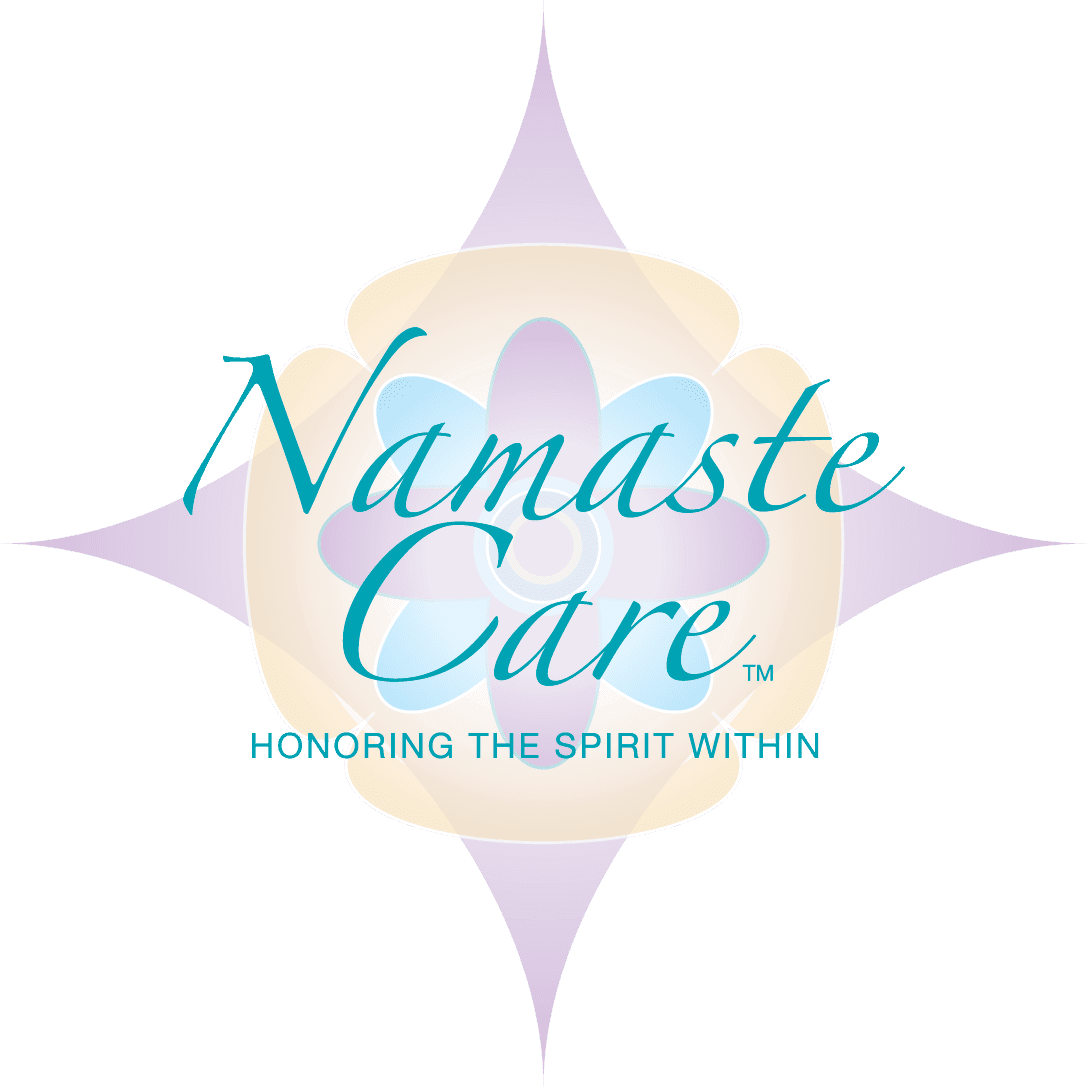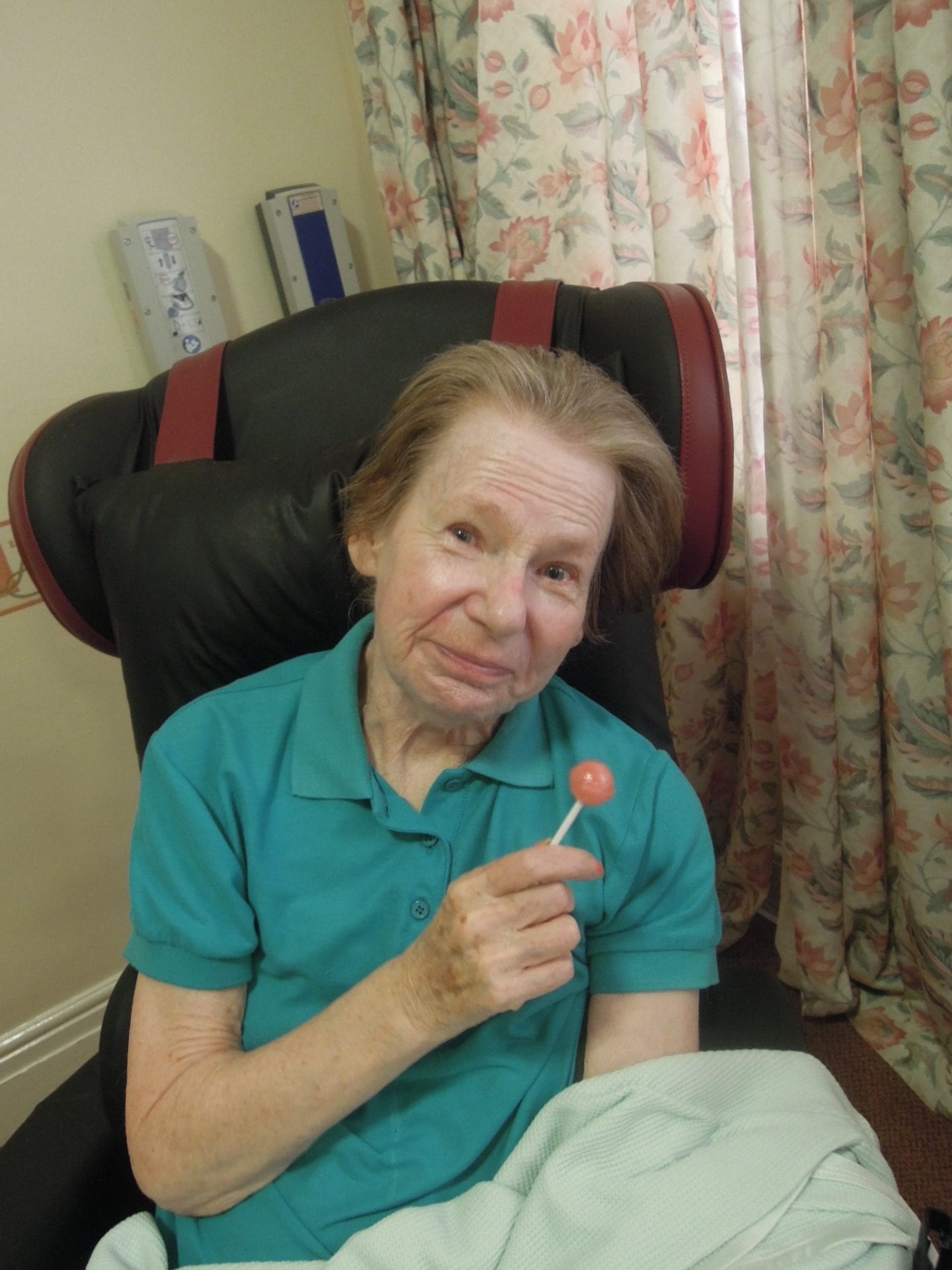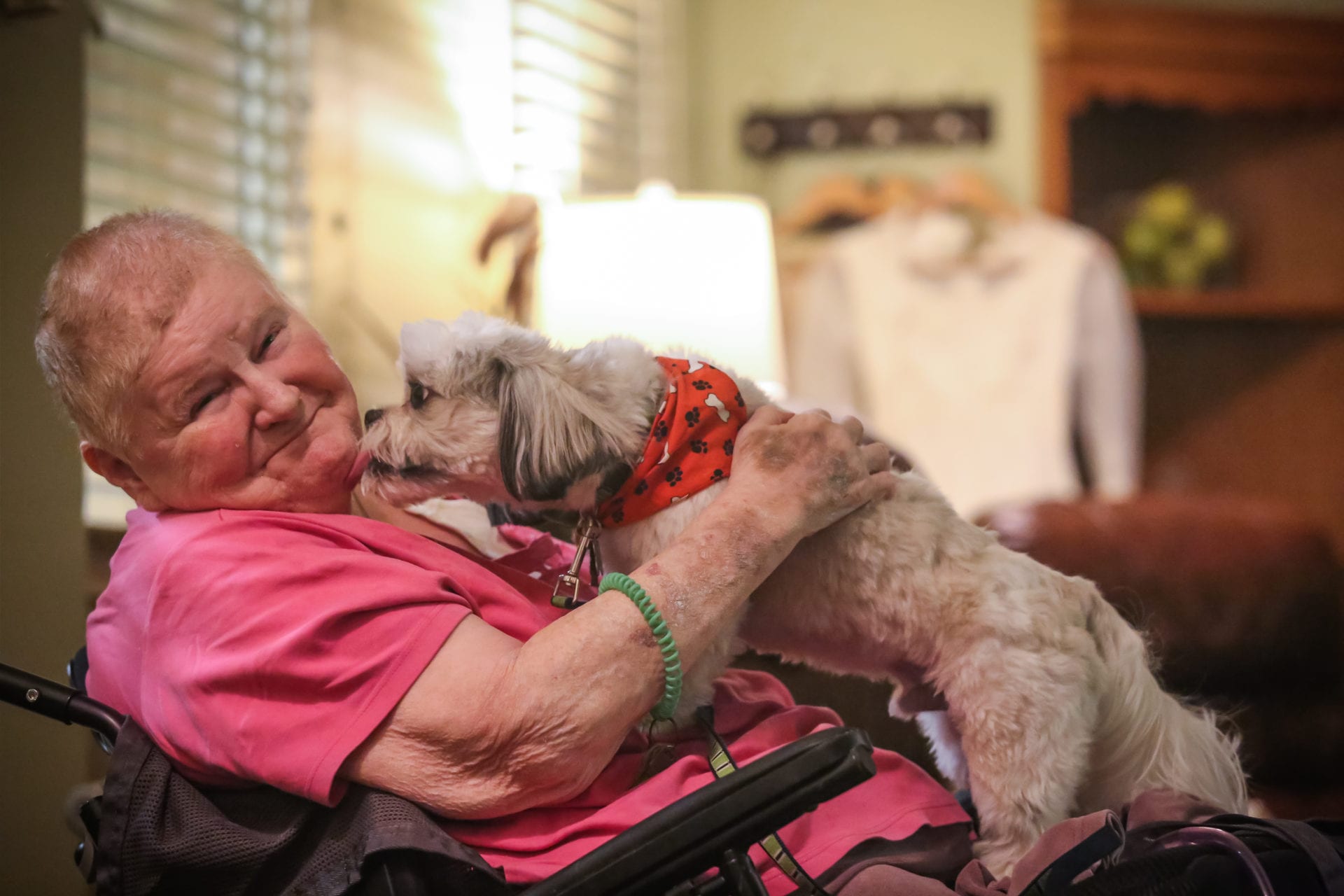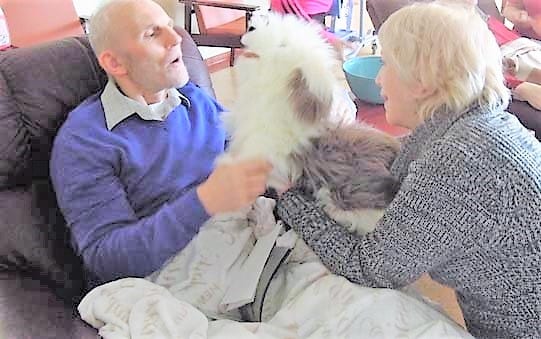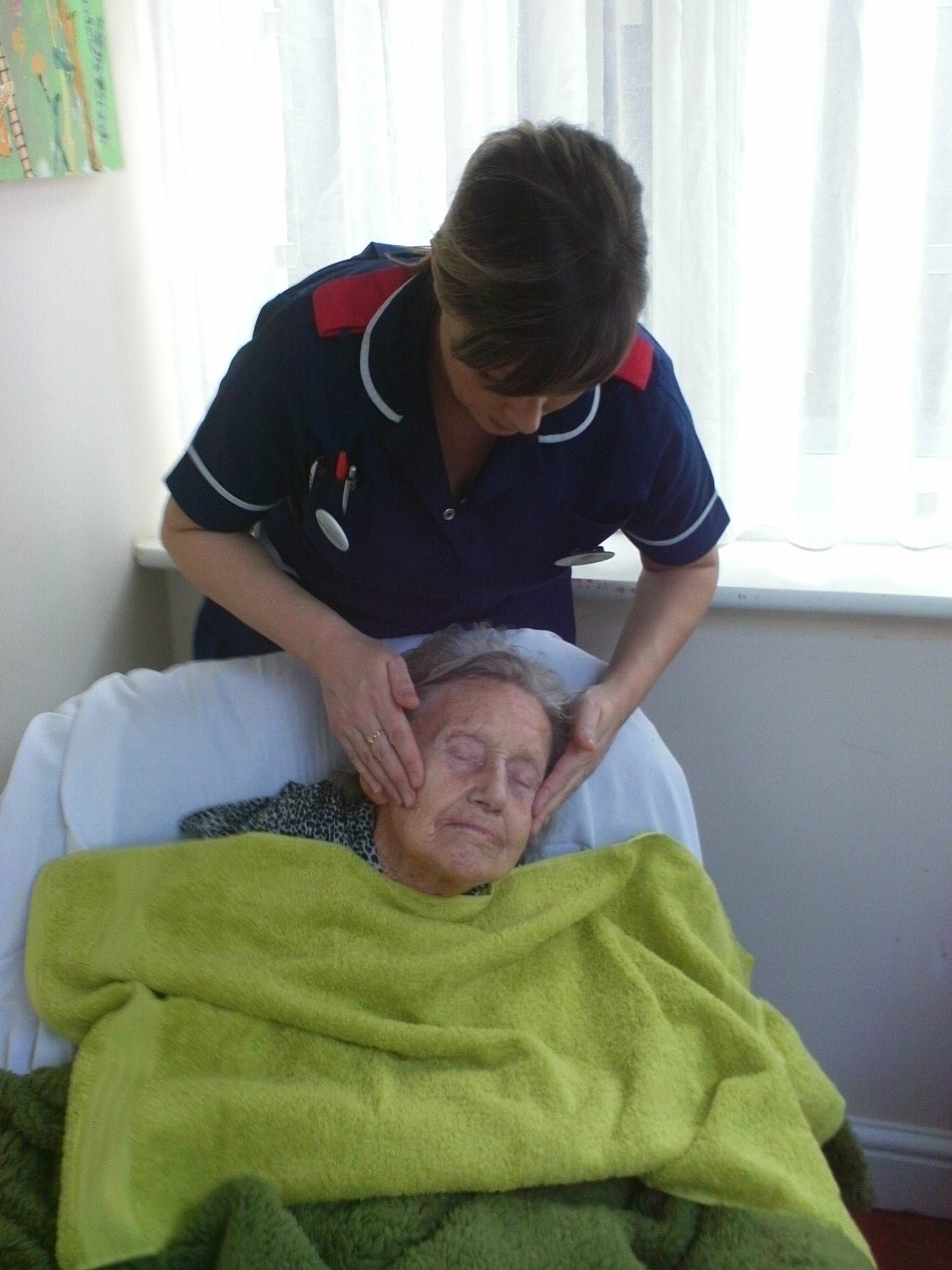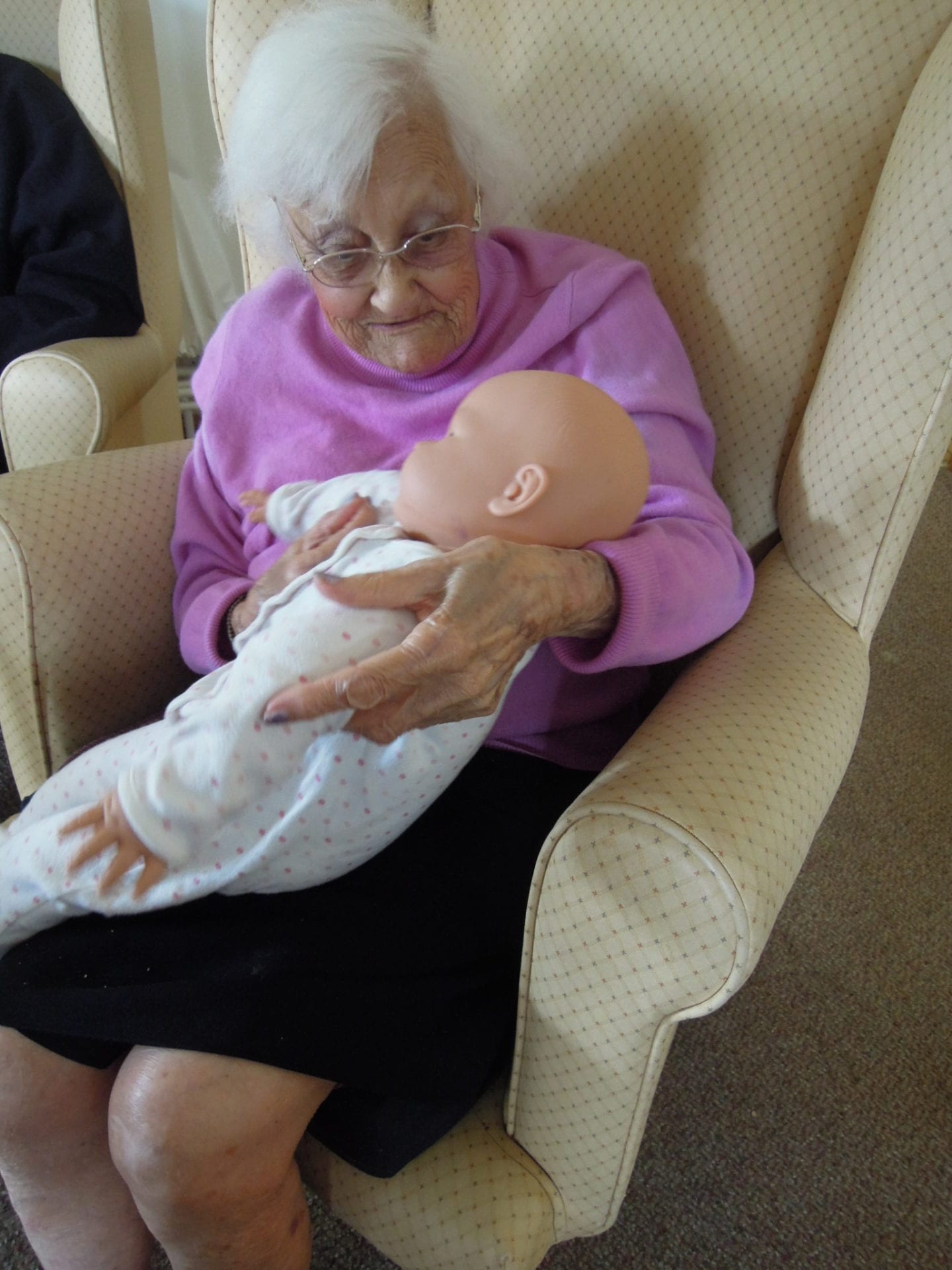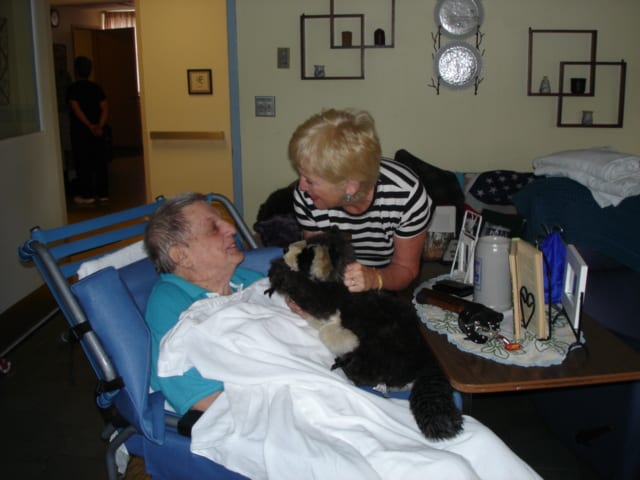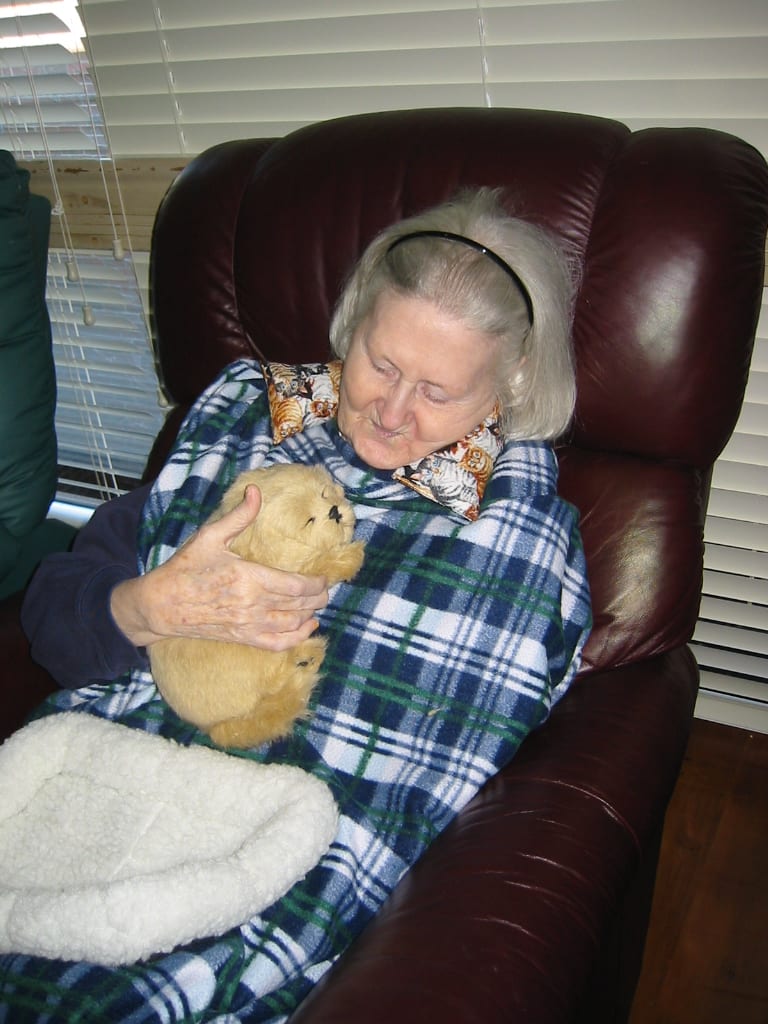The Namaste Care Individual Program
Namaste Care was originally developed as a small group program for people with advanced Alzheimer’s disease or another type of dementia living in a residential setting. It was adapted as an individual program that brings Namaste Care to people wherever they are living when hospice organizations began to bring Namaste Care to the bedside of their patients. They quickly discovered that most of their patients enjoyed Namaste Care activities, not just patients with memory loss. Now Namaste Care activities are offered to many people, most are elderly and may have a variety of health issues. They also live in many different settings.
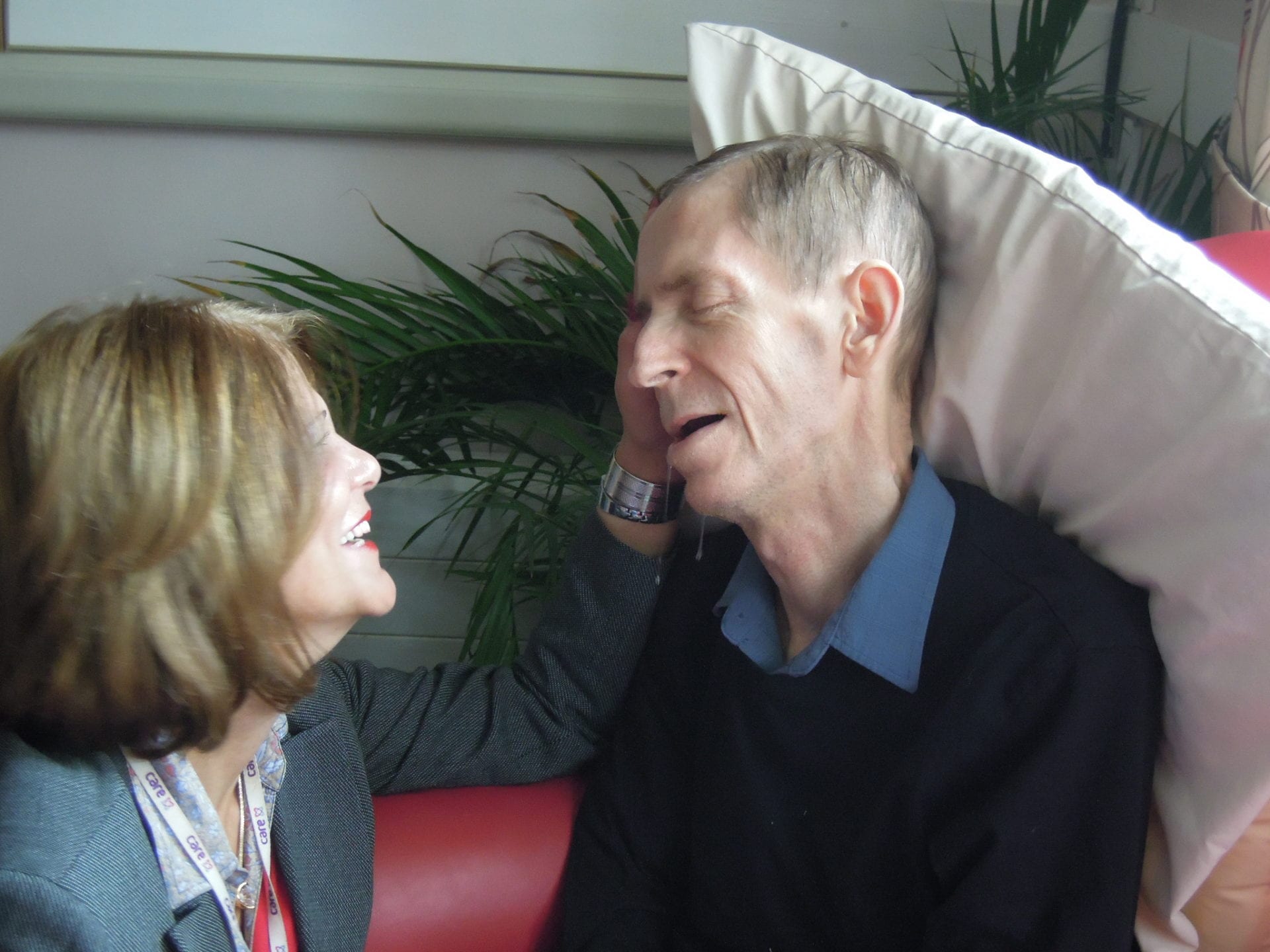
When I wrote the Namaste Care Individual Program, I followed standard infection control precautions. These standards are not as stringent as they need to be during this coronavirus pandemic. I have added more precautions to lower the risk of spreading the virus and maintain the integrity of the Namaste Care Individual Program by offering activities in a calm, peaceful environment with an unhurried loving touch approach.
Because this document is international, I will use “carer” for anyone providing care to an elderly or disabled person. “Care home” is any residential accommodation caring for the elderly and disabled. The following recommendations and activity ideas have been approved by several nurses who are the experts in infection control situations.
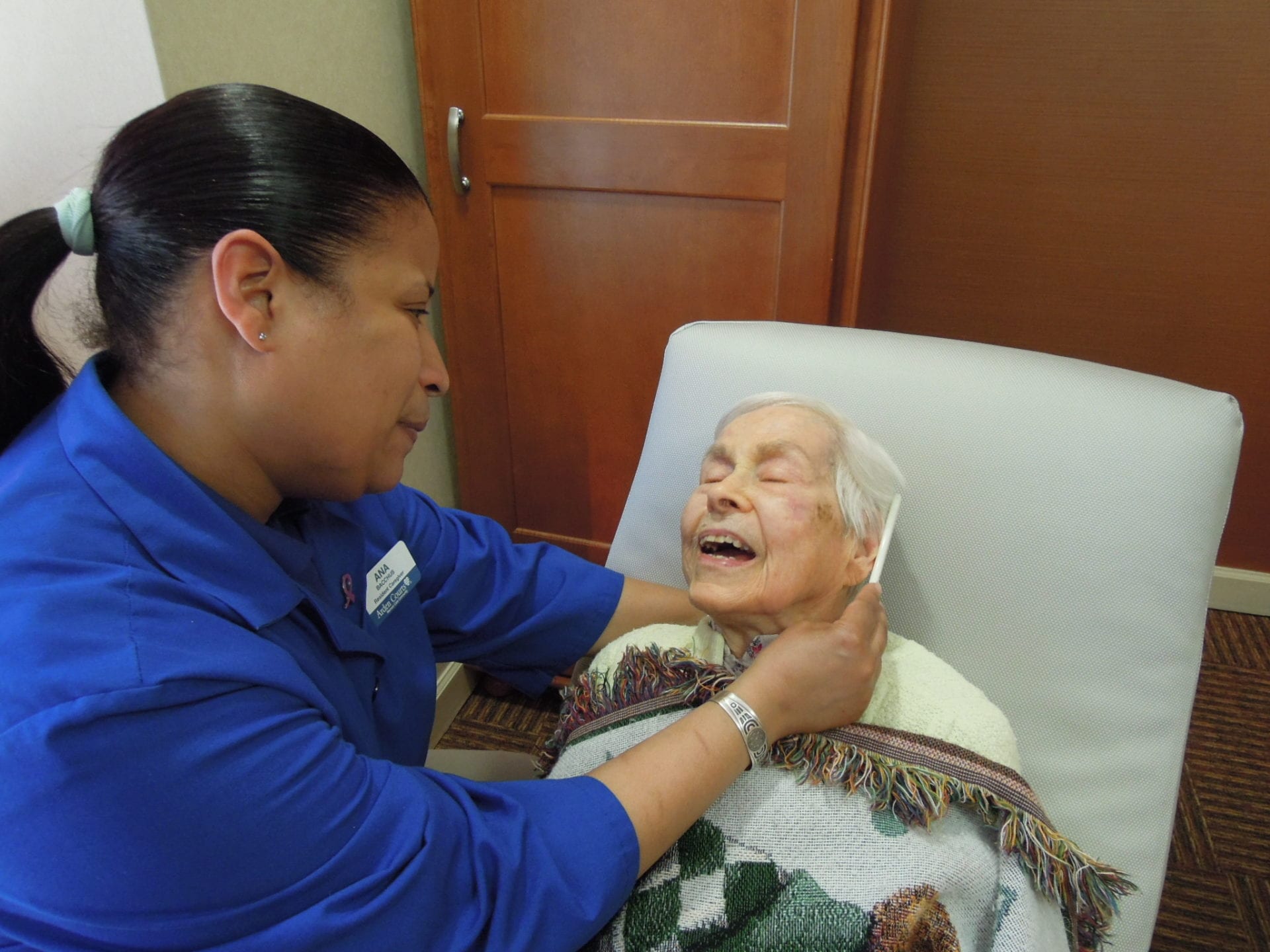
Individual Visits
People have been asked to stay at home, to lower their risk of getting the COVID-19 virus. Many care homes have asked that no one other than their carers can come in to the building. In many care homes communal dining has stopped; everyone is eating all meals in their rooms. Group activities have also been discontinued. While these are positive steps to lower the risk of the spreading the virus, they are very isolating and are leaving people feeling lonely.
People who are employed in the care homes and are responsible for their Activity Program are now bringing activities to each person. When carers employed in the care home or hospice carers have time to offer Namaste Care Individual activities they can make the interactions more social and enjoyable when they have items that an elderly person, especially one with dementia, may remember as pleasurable.
Namaste Care Bag
All items that are needed for offering Namaste Care activities are to be kept in a bag that is washable and has a zipper to keep it closed when the bag is not being used. At the end of each day the bag should be wiped with a sanitizer. The bag is not touched by anyone other than the
person providing Namaste Care activities. If it is touched by anyone else, the bag is immediately sanitized. A bag is used rather than a basket or box as it is easier to keep clean.
The bag should look attractive and in a large organization the bag may have the name of the company on it, so it is also a way to market the organization. It is easy to find washable bags with birds, flowers or butterflies on them, so they are quite attractive and do not look medical.
Sanitizing items:
Carers wash their hands with soap and water for at least 20 seconds whenever they have contact with another person or have touched a surface that may have been touched by another person. Hand must also be washed after using the bathroom.
Liquid hand sanitizers will be placed in each Namaste Care bag. They are used if soap and water are not immediately available. Alcohol rub sanitizers kill most bacteria, and fungi, and stop some viruses. Alcohol rub sanitizers containing at least 70% alcohol (mainly ethyl alcohol) kill 99.9% of the bacteria on hands 30 seconds after application and 99.99% to 99.999% in one minute.
Disinfecting wipes will also be included in each Namaste Care bag. They are used to clean door handles, bathroom countertops, sink, shower faucets, and toilets and the items people touch in the Namaste Care Individual Program. Wipes can kill 99.9 percent of germs that can live on surfaces for up to 48 hours, and 99.9 percent of viruses and bacteria. They are easy to carry and use quickly. The hand sanitizers and wipes will be kept in plastic zip lock bags.
Namaste Care Medical Items
Each Namaste Care bag will have latex gloves available. Bags are usually assigned to one carer so the gloves can be the proper size for that person. Namaste is usually offered without gloves as the skin to skin touch is part of the principle where all interactions are offered with a non-medical loving touch approach, however, until the World Health Organization has declared that the pandemic is no longer a health problem, gloves will be worn anytime a carer is touching the person they are interacting with.
Face masks are recommended for carers or family members of people who are already showing symptoms of the virus. Mask can help prevent spreading the virus by protecting others nearby when the person coughs or sneezes
Non-Medical Namaste Care Items
Namaste Care activities include Activities of Daily Living (ADL’s) offered with an unhurried loving touch approach. Products needed for face moisturizing for the ladies in the United States is Ponds Dry Skin Facial Moisturizer, Nivea was used in the United Kingdom. Both
products are available in containers that have not changed over the years and ladies may remember them.
Q-tips, or cotton swabs are used to take cream from the jar and put it on the persons face. The swabs are placed in a waste container or a zip lock bag that will be disposed of when the visit is over. Men’s faces are moisturized with a non-scented lotion or scented with a drop of Old Spice after shave lotion as this is scent they may recall.
At this time, it might be prudent to have a small jar of face moisturizer for each person kept in a zip locked bag with the person’s name on it. Both Ponds and Nivea can be purchased in small jars that are not expensive. Small plastic jars with screw tops are available on the internet if it is more practical to buy large jars and take the cream out and put it in individual jars. The original jar can be used to show the person the cream that is being used as they may remember the look of it. If the person holds the jar, it is wiped before being placed back in the bag.
One large bottle of unscented lotion will be included in the bag to use when moisturizing a person’s arms or legs. This cream can also be put into smaller jars to eliminate the risk of spreading germs.
A small spray bottle with lavender spray or other pleasurable or seasonal scent will be in a zip lock bag. It will only be touched by the carer and wiped after it is used.
Emery boards are used if the persons fingernails are torn and jagged. Nail clippers are not included in the Namaste Care bag as carers needs to be trained how to clip the fingernails of an elderly person. Emery boards are easy to use and inexpensive so that each person can have their own emery boards. They are kept in small bags with the name of the person on it.
Namaste Care activities can address the spiritual needs of a person with dementia who cannot attend religious services or who would not find watching them on television rewarding. Music appropriate to the persons religion is played during this activity. A notebook can be assembled with religious and spiritual prayers or sayings and pictures that would be familiar to a person practicing that particular religion or spiritual belief. Catholics will remember pictures of the Blessed Virgin Mary, a priest and one with vestments the elderly person will remember. Pictures of local churches might also be meaningful as they recall attending church with family and friends.
People of the Jewish faith might enjoy pictures of the Torah and perhaps one of a Rabbi. Many Jewish homes had a mezuzah attached to the entrance of their homes. The mezuzahs can be included in the Namaste Care bag as they are small and easy to wipe off after being touched. Music representing the Jewish faith will also help the person with memory loss remember practicing their religion. U-Tube has many videos of Jewish music, some with choirs , others just instrumentals.
Reminiscing by looking at pictures of items they may remember often bring smiles to the faces of men and women as they recall the variety of tasks assigned to them when they were younger. Woman often like pictures of old-fashioned wringer washers, rolling pins, dresses and hats from the 1940’s. Some men wore hats for church and special occasions. Men were responsible for shoveling snow, cutting the grass, getting gas for the car and some like the occasional game of card, for men only!
Objects used to provide meaningful connections for people receiving Namaste Care must have surfaces that can be sanitized unless the object is just for one person. Realistic dogs and cats and life like dolls bring great comfort to some people especially those with dementia. It is almost impossible to totally disinfect these items, so they should stay with one person.
Life Stories
Life Stories can be created with the help of family members. I created one for myself. I used a plastic binder that can wiped off easily and often. On the cover, I have a picture of me when I was about seven years old. It is a picture my parents had framed in the living room of the home where I spent most of my growing years. It was their favorite and I decided it would probably be one I will remember.
The first page is my Life Story, just one page in large type that I will be able to read if I develop vision problems. I am often surprised that a person with dementia who has difficulty speaking can still read! This one page has the facts of my life, where I was born, schools I attended, marriages, children and my career.
The next page has pictures of my parents when they were in their 50’s and my four children when they were in their 20’s. I have put names under each person’s picture. The next pages have pictures of me during my high school years, several as a Girl Scout, the various plays I was in, leading a parade of kids in my neighborhood and other ones I think I will remember.
I have been married three times and have no idea what husband I might remember so I have wedding pictures of all weddings! Then I have a picture of the school in Boston I attended after high school. That one was hard to find as it is now a parking lot! I also have pictures of the books I have written. All pages are enclosed in plastic protectors that are wiped off after a person touches them.
Namaste Care
Wherever Namaste Care is offered, in a care home, hospital, impatient unit or in their homes what does not change even in this time of crisis is that all activities are offered in an unhurried loving manner. If physical touching is limited or when gloves must be worn while touching a person, people can be “touched” in non-physical ways. When the carer looks at the person and is present for them, with their entire body they convey the loving touch approach, just without
the skin to skin physical touch! The carer speaks to them lovingly telling the person how happy they are to be with them. Perhaps we can refer to this as a “eye hugs”.
Gloves are now often worn and while the touch is not skin to skin, it is touch.
The room or space is made as free from distractions as possible and the lights are lowered, or window coverings are opened so that natural sunlight is streaming into the room. Calming music or whatever music the person enjoys is playing throughout the visit. If a cell phone or CD player is used, they are wiped after the carer starts the music. The space is scented with lavender or another pleasing scent and the Namaste Care activities begin.
While we often begin Namaste Care activities with washing and moisturizing the persons face, this may be replaced with a gentle hand and/or shoulder massage. The Namaste Carer is gently speaking to the person throughout the visit. Some people can respond others may just enjoy hearing the carers voice speaking to them.
Hair can be combed, brushed and these items are kept in bags with the person’s name on them. Many people just like their hair “fussed” with and the carer will have gloves on for this activity and will wash their hand when finished.
We offer continuous hydration during Namaste Care as many elderly people especially those with advanced dementia become dehydrated. Disposable cups are used during the visit and thrown away when the visit is over.
Namaste Care exercises take place when the carer takes the person hands and “dances” with them to dance music they may remember. The carer wears gloves and washes their hands after the person has been thanked for the dance and the gloves are taken off.
Perhaps the “fun” activities are even more important now with the stress from the virus affecting everyone. Individual bubble bottles are inexpensive, and each person can have their own bottle kept in a plastic zip lock bag with their name on the bag. This is not only a good for infection control, but occasionally the top is not screwed on tightly and leaks!
We say that in Namaste Care the outside is brought inside. Now, that is not practical as many items from nature cannot be sterilized. Sports items that reflect the season maybe a way to introduce the seasons. In many countries real looking soccer, baseballs, footballs tennis balls are available for children and are easy to handle and keep sanitized. Seasonal items might also be bird feeders, Christmas ornaments, plastic Easter eggs, beach balls. All of these items can be easily sanitized.
Family and Friends Keeping in Touch Without Touching
Family members and friends of people in care homes can stay in touch without touching in many ways. If the person in the care home has their own computer, they can receive messages, pictures and have visits using Facetime, Skype or Zoom. If they do not have their own personal
computer, a staff person who usually offers group programs can organize family visits using the care homes’ computer.
Family members can also record themselves having a one-way conversation with the person. For instance, the daughter can say “HI mom, it’s your daughter Joyce and I’m wondering how you are feeling today?” Then the recording pauses as the hope is that the person will respond. Then the daughter might say what they are doing on that day and asks what mom is going to do today. Another pause. This recording can be used over and over as the person with memory loss will no doubt forget that they have heard it before.
Families and friends can plan to see each other for birthdays and other special family days using the internet. Visits can be offered with the person in the care home at a window and their visitors on the outside with signs or a wipe off board used to communicate.
Use the mail, send cards with pictures or funny cards. Making sure that families know how they can ‘visit” remotely will not only help the person in a care home feel less lonely, but the family members will feel as if they still be a part of the person’s life.
Pandemic COVID-19
In the best of times, Namaste Care is a small group program led by a person who has received education on how to implement the group program. The Namaste Care Individual Program had been developed for hospice carers and volunteers who brought Namaste Care to people in their homes. With the declaration of the Covid-19 Pandemic, groups have been discouraged and people are often alone and lonely. I have tried to provide some ideas on how to offer the individual Namaste Care ideas and maintain the safety of the carer or family member and the person receiving these activities. I look forward to hearing activity ideas from you as well as ways to be as safe as possible while offering Namaste Care. Please send all ideas or what you feel needs to be edited. I am not a nurse so any ideas on how to help limit the risk of acquiring this virus will be welcome. The easiest way to reach me is through email. [email protected]
Stay safe & Namaste, Joyce Simard
End of Life Care
Namaste Care helps a person have quality of life until the end of life. When a person is actively dying, the environment is made comfortable and soothing by eliminating noise and lowering the lights. If the person was religious, music that reflects their religion is played. When they were not a person who felt close to a particular religion, soft calming music is played.
When the person is in a private bedroom the door is closed, if they are in a room with others privacy curtains are pulled around the bed creating a cocoon like feeling. Room dividers may also provide some privacy.

Families and caregivers are urged to talk to the person as hearing is the last sense to be affected in the dying process. The four simple phrases suggested by Dr. Ira Byock, are “Please forgive me,” “I forgive you,” “Thank you,” and “I love you”.
Unscented lotions are available so that families can give gentle hand massages as the person is dying. Families may also read favorite passages from the bible or poetry the person enjoyed. Family members who cannot be present may have written farewell letters that may be comforting to both the person who is dying as well as the family and friends sitting by the bedside. Internet services like Skype and Facetime are ways families and friends can say goodbye no matter where they live.
After death care in the Namaste Care Program include the body being accompanied to the hearse by at least one person. Some care homes have special quilts made that are placed over the body bag as the person is taken to the hearse. The quilt is taken off when the body is placed in the hearse, so it can be used again. One home had a quilt made with some quilt pieces in beige where staff could sign their names with indelible ink. Another made a quilt with hearts around the border and each heart had the name of a staff person on it.
The “No One Dies Alone” program is an excellent resource to use when someone is actively dying and has no family or friends to be with them. Joyce has adapted it for care homes and if you are interested in having her send you what she developed, email her [email protected]
